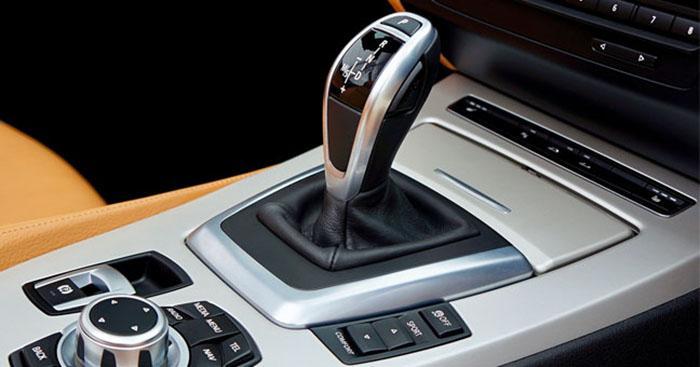There are a variety of transmissions available for vehicles, which dictate how the vehicle’s gears shift in order to maintain a steady speed.
What type of transmission is your vehicle equipped with? This is a simple question.
You Are Watching: How To Identify Transmission By Vin Updated 04/2024
You’ll need to know about the vehicle’s transmission system in order to be able to address any issues that may arise while driving.
There are two basic types of automobile transmissions: automatic and manual.
There are a slew of methods available for discovering your car’s transmission type, including the following:
Inquiring about the type of transmission by using the Year/Make/Model tool
Using The Vehicle’s Owner’s Manual
Taking a look at the white card that is attached to the driver’s side door.
Investigating What’s Under The Hood/Or On The Trans Oil Pan
Using the 17-Digit VIN to Find the Vehicle
You may need to know more than just the make, model, and year of the vehicle.
What kind of transmission does the vehicle have? This is critical information for you as an owner of the vehicle, so don’t skip this step!
If you’re looking to find out what kind of gearbox your vehicle has, there are a number of methods you can utilize.

How To Find Out What Transmission Your Car Has
Keeping track of what kind of transmission your car uses is critical, as we’ve already mentioned.
The most common method is to enter the vehicle’s year, make, and model into an online tool, although this may not be sufficient, and there are additional options.
Even knowing the engine size or the vehicle’s top speed isn’t enough for some of these.
You’ll need the help of an expert or a team of experts in an auto parts store to get the transmission type of your car from the information provided in the following sections.
You should be able to determine and confirm the transmission in your vehicle using the following methods.
Read more: Best Pmr 30 Holster
1. Using The Year/Make/Model Tool To Check The Type Of Transmission
Only a few data about your vehicle are needed to access a tool that tells you the transmission of your vehicle-the year, make and model of the vehicle.
This is a simple tool that should be able to provide you with the results you desire.
Identifying your vehicle’s transmission type may be as simple as this; however, it may only be true for the majority of vehicles.
On the other hand, you may not always get the information you need to fix a problem with your vehicle’s transmission if you use this program.
2. Referring To The Owner’s Manual Of The Vehicle
New cars come with an owner’s manual, which you can find in the glovebox.
The vehicle’s owner’s manual provides a wealth of useful information that you should be aware of before you get behind the wheel.
In addition to the broadcast, there will be other useful information displayed.
The brand of transmission fluid to be used, as well as the direction in which the fluid and filter should be changed, are all provided in this guide. It also includes information about the vehicle’s other features.
For a second-hand vehicle, the owner’s handbook may not be included, but there are alternative ways to learn about the transmission.
3. Checking The White Card That Is On The Door On The Side Of The Driver
It is possible to inspect the vehicle’s transmission from the door on the driver’s side.
The information can be found on the door’s inside edge, and it appears as a tag with a list of vehicle information.
The year, country of origin (manufacturing), engine type, and transmission type are all included in the list.
4. Checking Beneath The Hood/ Or Even On The Transmission Oil Pan
Another clear and direct way to learn about the transmission of a car is to inspect the transmission components themselves.
You may need to get your hands dirty and crawl under the vehicle to do this.
If you’re looking for transmission part numbers, you’ll need to pay attention to the transmission itself or even the pan in some cases.
Take the numbers to your local auto shop, and they should be able to tell you what kind of transmission your car has.
You can find out with which transmission this part is related by doing some research and cross-referencing.
5. Looking Up The 17-Digit Vehicle Identification Number
The vehicle identification number (VIN) is a unique identifier for each vehicle (VIN).
The 17-character number is a form of code that identifies the vehicle’s specifications.
From the outside, you should be able to make out the number on the metal dash plaque by looking through the glass.
The driver’s door of the car should also have a copy of this document.
There are 17 characters in the vehicle identification number (VIN) that reflect a specific feature of the car.
Read More : How Long Does It Take To Replace An Engine Updated 04/2024
It’s possible to learn about the vehicle’s engine type, transmission, country of origin, and more by looking at its serial number.
Each character can be deciphered by visiting DecodThis.com or your local car shop.
Various forms of information can be gleaned from the 17 digits of the vehicle identification number.
Deciphering them will help you determine the type of transmission in your vehicle.
Transmission type should fall between the 4th and 8th digits of the VIN in the vast majority of cases, if not all.
The year of the vehicle’s manufacture, the manufacturer, and the country of origin can all be deduced from the Vehicle Identification Number.
Computers may utilize the 9th digit to verify the vehicle’s Vehicle Identification Number (VIN) and determine whether or not there is a problem.
Your vehicle’s transmission type can be determined using the methods listed above. It’s possible to get the same effect by using only a few, perhaps three.
Use the most convenient method that is also the simplest and most straightforward for you to determine the type of transmission in your vehicle.
4 Types Of Transmission (What’s Yours?)
One of the most common types of transmissions for automobiles is the “manual.”
As you step on the clutch, you swap gears manually.
It’s a simple matter of shifting gears with an automatic transmission, which shifts ratios as you drive the vehicle.
This means that your vehicle is an automatic transmission vehicle if it has only two pedals, namely the accelerator pedal and the brake pedal.
1: Automatic Transmission
The automatic transmission is the most frequent and arguably the most popular type of automobile transmission in use today.
Drivers prefer them over manual transmissions because they offer a more straightforward driving experience.
Instead of having a clutch pedal, this transmission has two pedals only: the accelerator and the braking pedal.
A torque converter is used to automatically swap gears in a car with an automatic transmission.
In order to control how the vehicle shifts gears, a computer-controlled electronic system is used.
One way to tell whether your car has an automatic gearbox is if it doesn’t have a clutch pedal and if you can just put it in drive and it will gradually shift from the lowest ratios and forward as you accelerate.
2: Manual Transmission
Many years ago, this was a common type of transmission found in automobiles.
Autonomous vehicles may be fun to drive, but many find them more efficient.
As a result, there are fewer vehicles with manual transmissions.
You should be able to tell if a vehicle still has a manual transmission by looking at how the cabin is set up.
Aside from that, the vehicle will feature three pedals: one for each pedal.
When shifting gears, the driver engages the clutch.
While physically adjusting the gear selection mechanism on your right hand side, you can switch gears by using this lever.
Unlike automatic transmissions, manual transmissions are more difficult to master and take practice before becoming second nature.
The advantage of an automatic transmission, on the other hand, is that it is less expensive to maintain.
3: Semi-Automatic Transmission
As a result, the driver gets a whole unique driving experience when they get behind the wheel of a car with this sort of transmission.
When changing gears, a gear selector is employed, which makes it look a lot like a manual transmission.
Semiautomatic transmissions don’t require you to engage the clutch pedal when shifting gears, unlike manual transmissions.
4: Continuously Variable Transmission
Unlike the other transmissions on this list, this one does not employ gears.
Running above pulleys, a metal or rubber belt changes the vehicle’s speed by varying the effective diameter of the belt.
In order to alter the vehicle’s speed, the diameter of one of the pulleys is increased while the diameter of the other is decreased.
Related Questions
What Transmission Does Dodge Use?
The Aisin AW (Aisin-Warner) transmission has been in use for more than a decade in the Dodge Ram, also known as the Ram truck.
For more than a century, this car model has relied on an automatic transmission.
The Aisin, a manual transmission that was used in the early 1980s, was a close second.
How Do I Identify My GM Transmission?
Automatic or manual transmissions are available for Chevrolet automobiles.
Automatic transmissions can be identified by searching up the identifying number or measuring the pan size.
Checking this is as simple as using the following step by step procedure:
Park the car in an open area, such as your driveway or garage.
Lift the side of the car where the driver sits with a car jack.
Read More : What Happens When A Wheel Speed Sensor Goes Bad Updated 04/2024
Get on your back and crawl under the vehicle while it’s on its side.
Take a look around your vehicle to see if you can locate the vehicle’s transmission.
Analyze the pan’s visual appearance and compare it to the schematics of similar components from other transmission designs.
You should be able to identify and decode the GM transmission.
You can also take note of the transmission’s serial number, which is normally located on the transmission itself.
The serial number can then be compared to the various transmission types that you are certain of.
Using this method, you should be able to identify the type of transmission in your car.
This video could also be useful:
Where Is The Transmission Model Number Located?
You can find out what type of transmission your vehicle has by checking the transmission number.
When compared to other methods of learning about a vehicle’s transmission, this is a lot more direct route to take.
It comprises a thorough examination of the vehicle’s transmission components. You’ll need to wear your overalls since you’ll be crawling and laying on the ground to check the model number of the transmission.
For some vehicles, the transmission model number will appear on the transmission itself or even on the transmission pan. We will need to pay close attention to these numbers when inspecting the transmission pan.
In order to find out which transmission is in question, you will need to write down the numbers and take them into your nearest auto shop.
You can find out with which transmission this part is related by doing some research and cross-referencing.
Does VIN Number Tell Me About My Transmission?
This information can be found in the Vehicle Identification Number (VIN).
Each of the 17 digits in the VIN has a specific meaning connected with a particular car.
Between the fourth and ninth digits of a vehicle’s VIN number, you can determine the vehicle’s transmission type.
What Do The Numbers On Transmission Mean?
The shifter on automatic transmission automobiles is marked with numbers and letters.
The following is a list of the meanings of the numbers and letters:
It’s all the front gears that are D-rated.
In the lower gears, you should be able to drive the vehicle at particular speeds with the L gear selected.
What Does The 17th Digit Of A VIN Mean?
In order to go into gear 4, you would have to put the shifter in D, which would only be possible if the vehicle was in gears 1, 2, and 3. (Drive)
What Is the Meaning of the 17th Digit in a Vehicle Identification Number?
The special production serial number allocated to the car on the assembly line can be derived from the VIN’s 12th through 17th digits.
What Does The 10th Digit Of A VIN Mean?
The Vehicle Identifier Section of the VIN can be found from the tenth to the seventeenth digits of the number (VIS).
It is only feasible to decode the 10th number to determine the year of the car made after 1981.
Using the 11th number, it is possible to identify the manufacturing plant from whence the car was manufactured.
What Does The 9th Digit Of A VIN Mean?
For example, the 9th digit describes the unique check digit for this particular car. This is typically used to identify fraudulent VIN assignments.
Numbers at this location are generated using a formula given by the United States Department of Transportation.
You may verify your vehicle’s VIN using this number, which is also utilized by computers to detect any suspicious activity related to your vehicle’s VIN.
What Does The 8th Digit Of A VIN Mean?
The Vehicle Description Section is often found in the VIN’s fourth to eighth digits (VDS).
Because of this, the 8th number might denote anything from the vehicle’s model to its body type to its safety features to its transmission information and even the engine’s code.
What Does The 6th Digit Of A VIN Mean?
There is a distinct meaning for each digit in the Vehicle Identification Number (VIN). Using this technology, producers can encode information at each phase in the design process.
The vehicle’s unique serial number can be gleaned from the 6th digit of the VIN. On the assembly line, the serial numbers are frequently coded to correspond to the automobiles’ production order.
A Toyota car’s VIN number includes the sixth digit, which denotes the vehicle’s serial number when it was built.
What Does The 5th Digit Of A VIN Mean?
The Vehicle Identification Number (VIN) offers information on the vehicle’s descriptor from the fourth to the ninth digit.
Manufacturers in this industry have their own system of coding the information displayed at each location. For Toyota, the vehicle’s engine is often designated by the 5th digit.
What Does The 3rd Digit Of A VIN Mean?
Using the first three digits of the Car Identification Number (VIN), you may determine the nation, firm, and model year of the vehicle.
Volkswagen commercial vehicles and trucks can be identified by their 3rd digit (the letter “1,” for example), indicating that they are either a commercial vehicle or truck, depending on the first two characters.
Conclusion
The transmission in today’s vehicles is much more complex than it was just a few years ago.
Today, there are more than 200 types of transmissions that may be installed in a car, although there may have only been four types of transmissions back then, and manufacturers are creating the practice of changing the transmission type of their vehicle annually.
When it comes to servicing and repairing your vehicle, you’ll need to know what kind of transmission it has.
Sources: https://micdot.com
Category: Car










